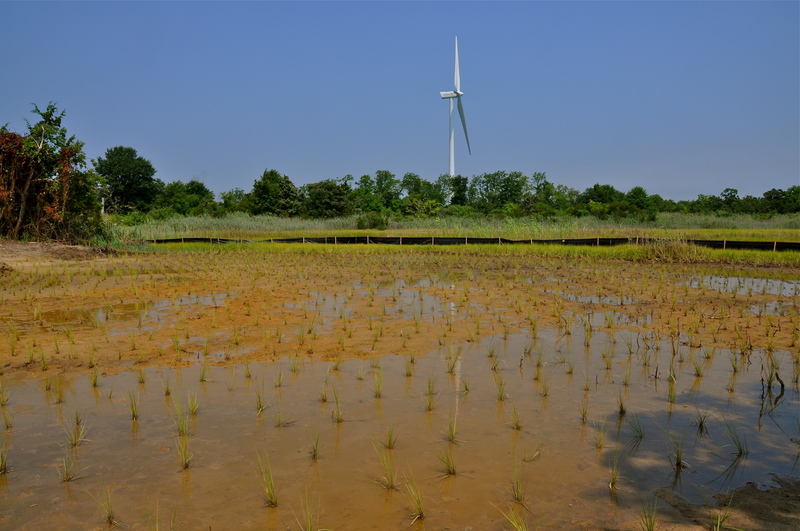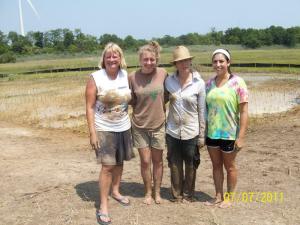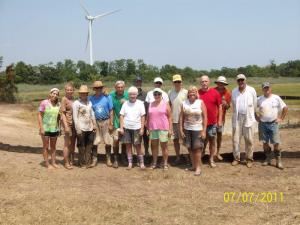Overfalls volunteers build wetlands

About 2,700 sprigs of cord grass are now growing near Canary Creek as volunteers worked to offset wetlands lost when the new bulkhead for the historic lightship Overfalls was built.
Lightship Overfalls Foundation volunteers assisted by University of Delaware College of Earth, Ocean and Environment summer graduate students completed development of 6,013 square feet of wetlands July 7.
The project is part of a wetland exchange that allowed for construction of the bulkhead and slip adjacent to the Lewes-Rehoboth Canal where the lightship Overfalls is now permanently berthed, next to Canalfront Park in downtown Lewes.
The new marsh will provide habitat and food resources for a variety of wildlife and waterfowl. It will also serve as a spawning and nursery area for fish, shellfish and invertebrates.
The marsh will also act as a buffer against storm tides and erosion, reducing pollutants entering the waterway by filtering upland runoff and trapping sediment and nutrients. This fall, Overfalls volunteers plan to plant shrubs in the sloping buffer zone connecting the new wetlands with the upland area. The work will be monitored over the next three years to ensure at least 85 percent of the area is covered by native wetland vegetation.
The mitigation site is adjacent to wetlands along an upstream reach of Canary Creek along Park Road, off New Road near the University of Delaware. The City of Lewes leases the land from Delaware Division of Parks and Recreation. The site was selected because it is close to existing tidal wetlands, would minimally disturb forested lands, offers easy accessibility for construction equipment and is potentially an area for public education.
Evelyn Maurmeyer of CER Inc. designed and planned the site and obtained state permitting. J.R. Mocci Co. excavated the site.
























































